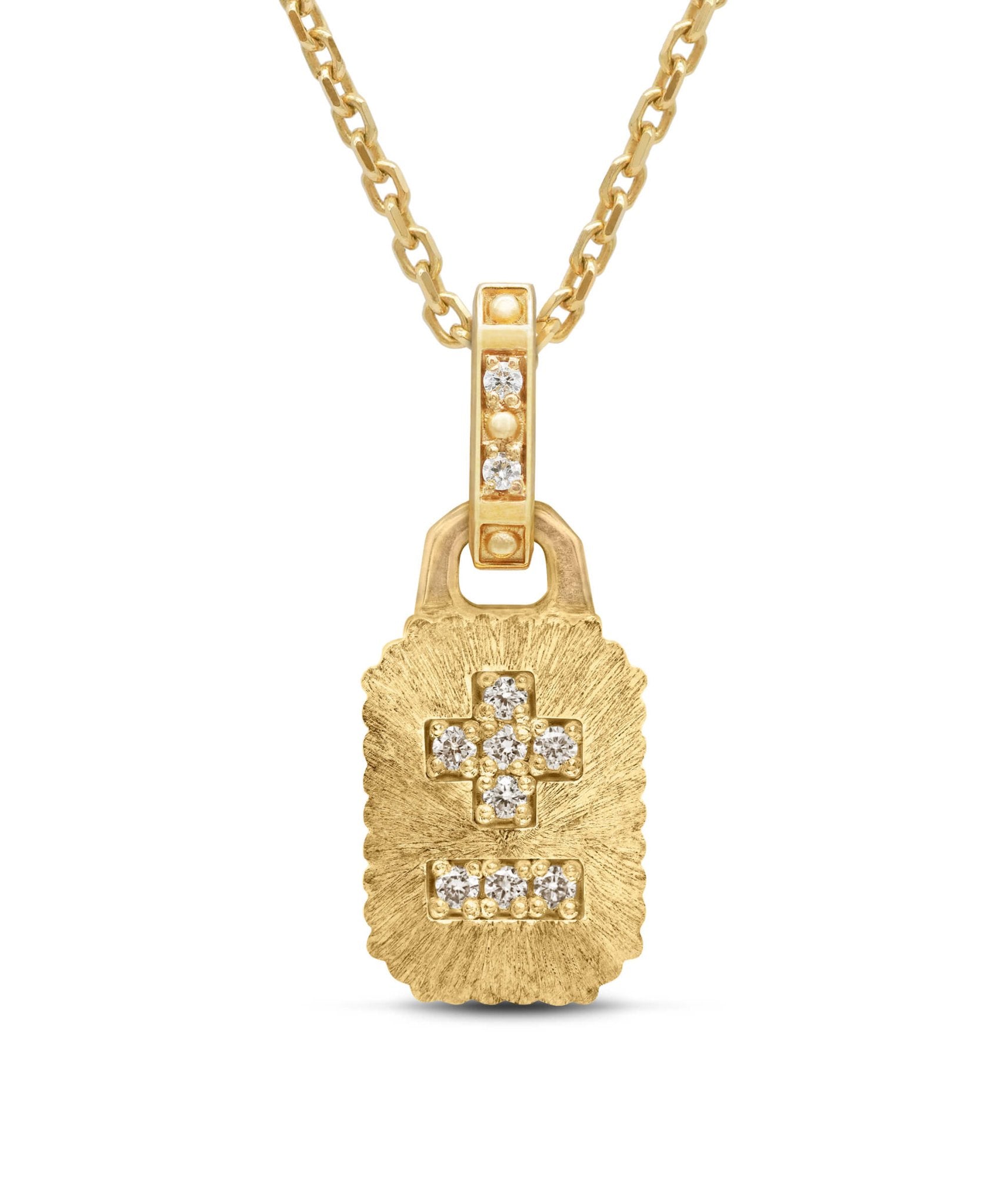The star symbol has captivated humanity for centuries, representing guidance, hope, divinity, and inspiration across various cultures and contexts. From ancient Mesopotamia, where stars were seen as divine, to their role in guiding the Magi to Bethlehem, stars have always held profound significance. They serve as beacons of light and stability, like the Northern Star for navigators, and inspire dreams and creativity in literature and art. Whether shining brightly in the night sky or adorning a piece of jewelry, the star remains a powerful emblem of aspiration and wonder.
Amuletha™ Book of Symbols
Star Symbol
*The Starry Night by Vincent van Gogh, 1889
Vincent van Gogh painted "The Starry Night" in 1889 while staying at the Saint-Paul-de-Mausole asylum in Saint-Rémy-de-Provence, France. Remarkably, the scene depicts the view from his bedroom window, although it includes an imagined village. The swirling patterns in the sky are thought to be inspired by the vivid, turbulent dreams he experienced during his bouts of mental illness. Additionally, Van Gogh’s brother, Theo, mentioned in letters that Vincent had a passion for astronomy, which might explain the precise arrangement of the stars, including the bright Venus visible in the painting. Despite its fame today, Van Gogh himself considered "The Starry Night" to be a failure.
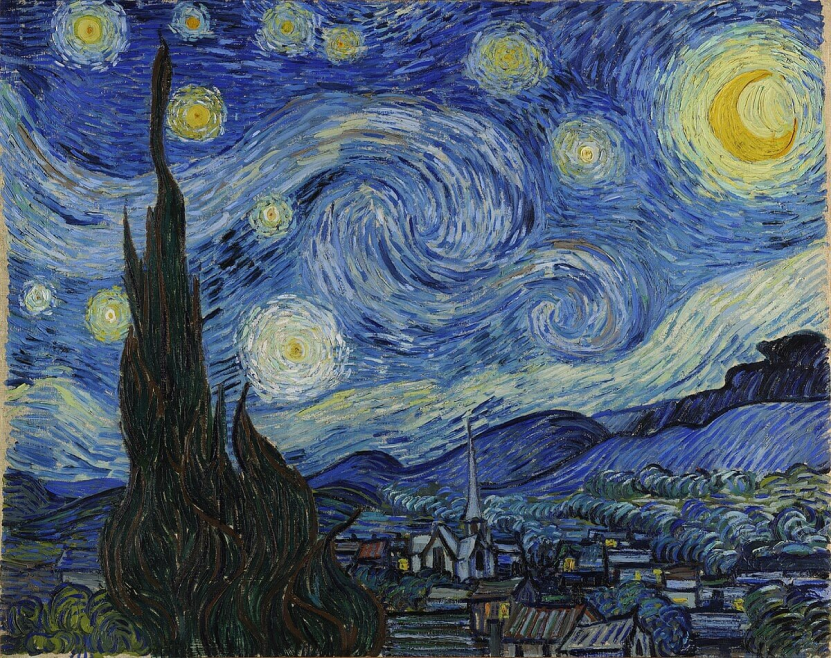
*The Starry Night by Vincent van Gogh, 1889
Vincent van Gogh painted "The Starry Night" in 1889 while staying at the Saint-Paul-de-Mausole asylum in Saint-Rémy-de-Provence, France. Remarkably, the scene depicts the view from his bedroom window, although it includes an imagined village. The swirling patterns in the sky are thought to be inspired by the vivid, turbulent dreams he experienced during his bouts of mental illness. Additionally, Van Gogh’s brother, Theo, mentioned in letters that Vincent had a passion for astronomy, which might explain the precise arrangement of the stars, including the bright Venus visible in the painting. Despite its fame today, Van Gogh himself considered "The Starry Night" to be a failure.
STAR SYMBOL ORIGIN
The star symbol has a rich and varied history, deeply embedded in human culture and spirituality. One of the earliest known uses of the star symbol can be traced back to ancient Mesopotamia, where it represented the gods of the heavens. The Sumerians used a star-shaped cuneiform sign to denote divinity, signifying the celestial nature of their gods and their perceived control over human fate. These stars were seen as powerful emblems of cosmic order, guiding humanity through the complexities of life with divine oversight. The star's connection to the divine also extended to astrology, where celestial bodies were thought to influence human destinies.
In ancient Egypt, stars were associated with the souls of the deceased, believed to be immortal and eternal in the night sky. The five-pointed star, or "sba," was often used in hieroglyphics to denote stars and their role in the cosmos, guiding the dead in their journey to the afterlife. The Egyptians saw stars as symbols of the enduring soul, navigating the celestial realm alongside gods like Osiris and Isis. This connection between stars and the afterlife underscored the Egyptians' belief in a cosmic order that transcended earthly life, promising eternal existence among the stars.
The star symbol’s graphic history also features prominently in Greek and Roman mythology, where it was often linked to divine beings and heroic tales. The Greeks associated stars with the gods and used them to navigate and tell time. Constellations were believed to be placed in the sky by the gods, representing myths and legendary heroes. The Romans adopted the symbol to represent their gods and the concept of eternity, with stars appearing in numerous artistic and architectural works to symbolize their divine connection. Throughout the Middle Ages and the Renaissance, the star evolved to represent guidance, protection, and aspiration, becoming a common motif in Christian art symbolizing the Star of Bethlehem and the divine light guiding the faithful. This period also saw the rise of the pentagram, a five-pointed star representing various esoteric and mystical traditions, further solidifying the star’s role as a symbol of profound spiritual significance.
What does STAR symbolize
While the star symbol carries numerous nuanced meanings, these four are the most universally recognized and embraced:
Guidance
Stars serve as beacons, leading the way through darkness and providing a constant point of reference, symbolized by the Northern Star.
Hope
Representing light in the darkness, stars symbolize enduring optimism and new beginnings, as seen with the Star of Bethlehem.
Divinity
Linked to the divine across various cultures, stars embody the presence and power of the gods, such as the Star of Bethlehem in Christianity.
Inspiration
Stars inspire wonder and creativity, symbolizing dreams, ambitions, and the pursuit of greatness, often used in literature and art as metaphors for lofty goals.
Cultural mention
The star symbol has profoundly influenced various cultures throughout history, serving as a powerful emblem in mythology, religion, navigation, and astrology. Across different eras and societies, stars have been revered for their beauty and symbolic meanings, reflecting humanity's enduring fascination with the night sky. From guiding ancient travelers to representing divine intervention and cosmic order, the star has played a crucial role in shaping cultural narratives and beliefs.
The star of Bethlehem
One of the most famous and enduring symbols in Christian tradition, the Star of Bethlehem is said to have guided the Magi, or Wise Men, to the birthplace of Jesus in Bethlehem. According to the Gospel of Matthew, this extraordinary star appeared in the eastern sky, signaling the birth of a new king. The Magi, likely astrologers from Persia, interpreted the star as a divine sign and embarked on a journey to honor the newborn Jesus. The Star of Bethlehem is often depicted in nativity scenes and religious art, shining brightly over the manger. It symbolizes divine guidance, revelation, and the fulfillment of prophecy, embodying the light of Christ leading believers toward spiritual enlightenment and salvation. The star's appearance is celebrated during Christmas, reinforcing its significance as a beacon of hope and divine intervention.
*Star of Bethlehem by Elihu Vedder, 1879
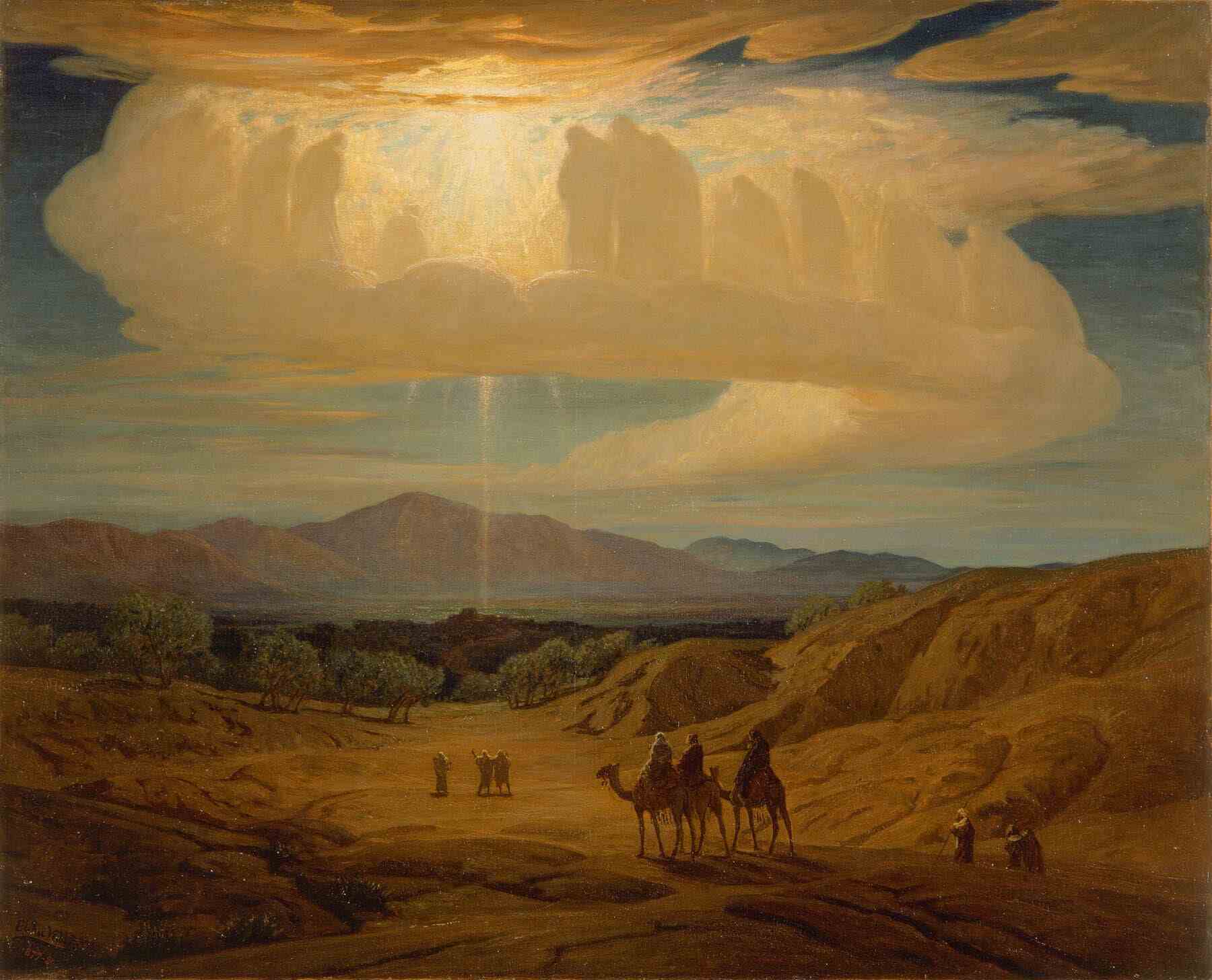
*Star of Bethlehem by Elihu Vedder, 1879
The Northern star
Also known as Polaris, has been a crucial navigational aid for centuries due to its fixed position in the night sky. Situated nearly directly above the North Pole, Polaris remains almost stationary while the rest of the stars appear to rotate around it. This unique characteristic has made the Northern Star an essential guide for travelers, sailors, and explorers, symbolizing direction, guidance, and stability. Historically, it has been a beacon for those seeking their way across uncharted territories, from ancient mariners navigating the seas to runaway slaves in America following the Underground Railroad to freedom. The Northern Star represents a reliable point of reference amidst the changing night sky, embodying hope, constancy, and the pursuit of one's true path. Its symbolic significance extends beyond navigation, often serving as a metaphor for finding one's way in life and remaining steadfast in the face of challenges.
*The North Star by Sydney Mortimer Laurence
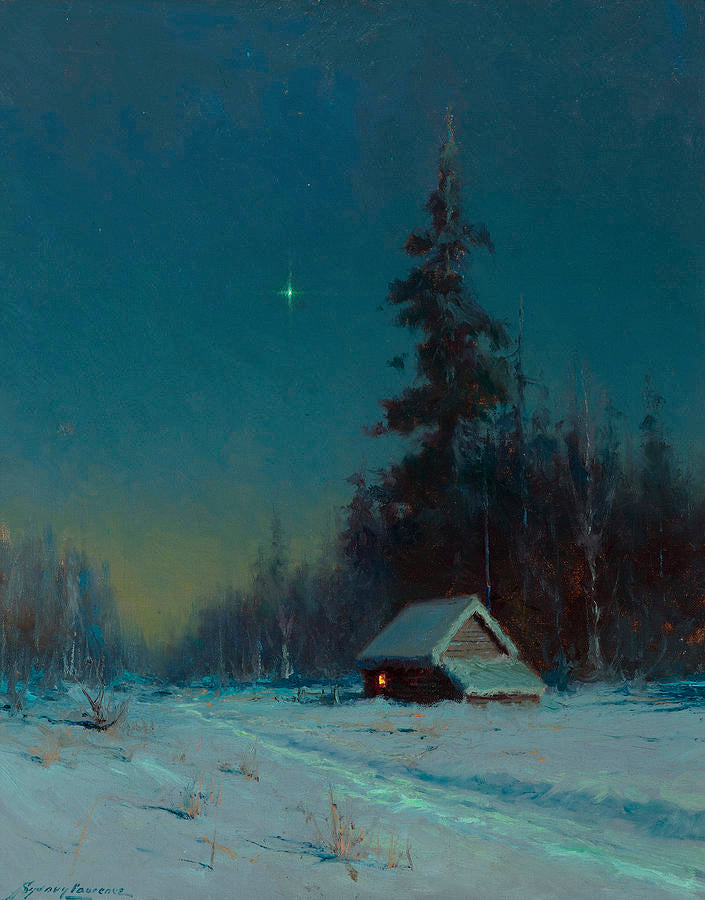
*The North Star by Sydney Mortimer Laurence
Celestial guidance
Astrology, the ancient practice of interpreting the influence of celestial bodies on human affairs, holds the star symbol in high regard. In astrology, the positions and movements of stars at the time of one's birth are believed to shape personality traits, behaviors, and life paths. The twelve zodiac signs, each linked to specific star constellations, form the foundation of Western astrology, providing guidance and predictions based on celestial alignments. Stars represent cosmic order and the connection between the universe and individual lives, serving as a tool for divination and self-discovery. Throughout history, astrologers have used stars to forecast events and advise rulers, reflecting humanity's enduring quest for meaning and guidance from the heavens.
*Star map of the southern sky, by Carel Allard, 18th century
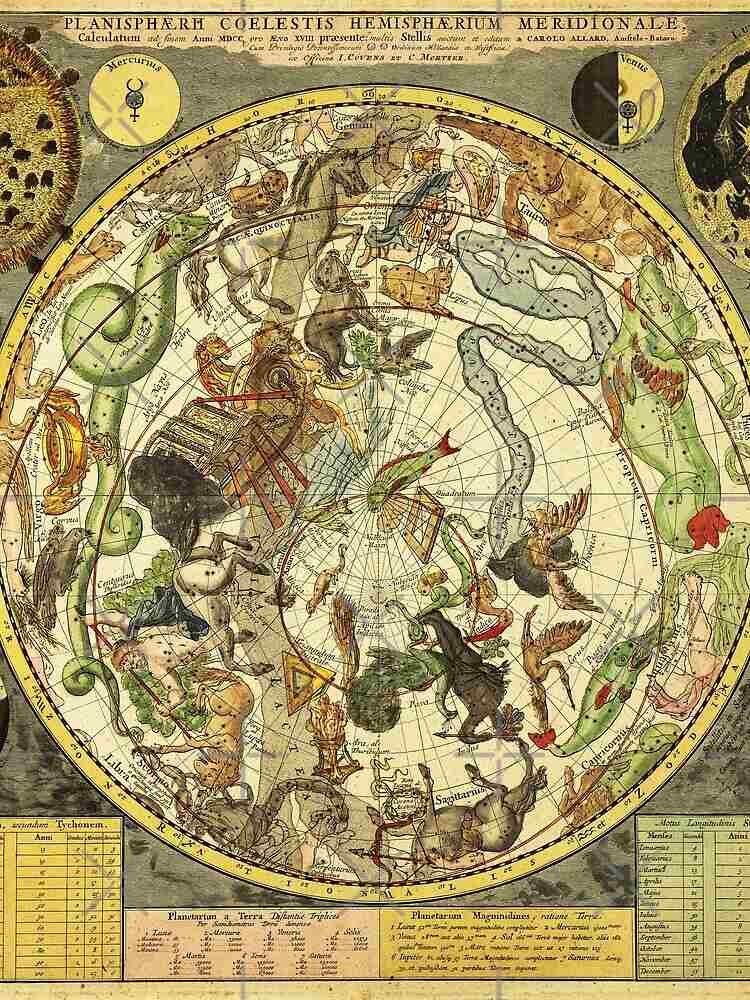
*Star map of the southern sky, by Carel Allard, 18th century
Star symbol in the world of jewelry
The star symbol has captivated the world of jewelry, admired for its dazzling beauty and profound symbolism. Often associated with guidance, aspiration, and divine connection, star-themed jewelry pieces are cherished by those who seek to embody these qualities. Star jewelry is particularly popular among individuals who value inspiration and hope, as the star symbol serves as a reminder to reach for the stars and pursue one’s dreams. Many choose star motifs to represent personal milestones and aspirations, wearing them as talismans of encouragement and strength. The elegance and simplicity of the star design also make it a versatile accessory, suitable for both everyday wear and special occasions.When given as a gift, star jewelry carries a message of encouragement and admiration. It is often bestowed to celebrate achievements, mark significant life events, or simply to inspire a loved one. The star's timeless allure and meaningful symbolism make it a thoughtful and cherished gift. Notable instances of star-themed jewelry include pieces given to honor accomplishments or to express a wish for the recipient's success and happiness. This makes star jewelry not just an adornment but a symbol of aspiration, guidance, and enduring connection.
What does a star symbolize in literature?
The star symbol holds a prominent place in literature, often used to convey themes of guidance, hope, and the vast mysteries of the universe. It is most frequently mentioned in poetry, where its ethereal qualities evoke a sense of wonder and aspiration. Poets use stars to explore human emotions and the cosmos' grandeur, making them ideal metaphors for longing, inspiration, and the sublime. Additionally, stars are prominent in romantic literature, symbolizing unattainable ideals and intense emotions. Philosophical and existential writings also feature stars, reflecting on fate, destiny, and the human condition.
Stars in William Shakespeare's Works
William Shakespeare frequently employed the star symbol in his works to convey themes of fate, destiny, and human ambition. In "Julius Caesar," Cassius speaks of the stars as metaphors for fate and human agency, declaring, “The fault, dear Brutus, is not in our stars, but in ourselves, that we are underlings.” Here, stars are invoked to question the extent to which destiny controls our lives versus our own actions. In "Romeo and Juliet," the phrase "star-crossed lovers" famously describes the ill-fated romance of the protagonists, with stars symbolizing the external forces and fate that conspire against them. Shakespeare's use of stars underscores their role as powerful symbols of destiny and the human condition, highlighting the tension between cosmic forces and individual agency.
Hugh Thomson - The Merry Wives of Windsor, by William Shakespeare
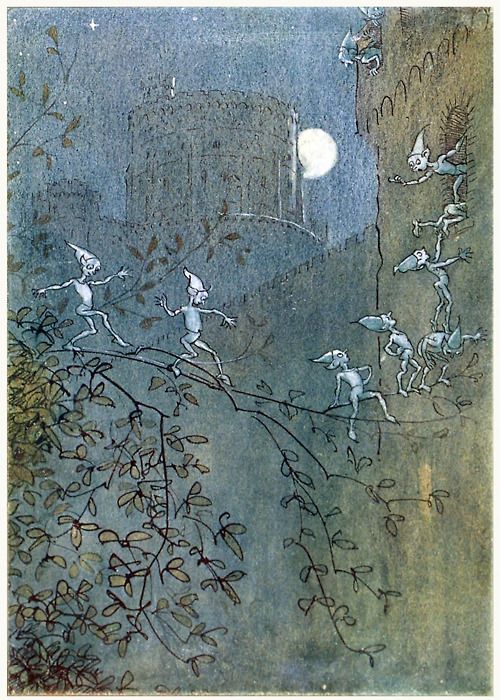
"Bright Star, Would I Were Steadfast as Thou Art" by John Keats
Bright star, would I were steadfast as thou art—
Not in lone splendor hung aloft the night,
And watching, with eternal lids apart,
Like Nature's patient, sleepless Eremite...
In this sonnet, Keats reflects on the star’s steadfastness and eternal presence, contrasting it with the fleeting nature of human life. The star symbolizes an unattainable constancy and perfection, embodying the poet’s longing for eternal beauty and love.
"Twinkle, Twinkle, Little Star" by Jane Taylor
Twinkle, twinkle, little star,
How I wonder what you are!
Up above the world so high,
Like a diamond in the sky.
This nursery rhyme captures the star’s enchanting and mysterious nature, evoking a sense of wonder and curiosity. The star serves as a symbol of innocence and the innate human desire to explore and understand the unknown.
"Stars" by Robert Frost
How countlessly they congregate
O'er our tumultuous snow,
Which flows in shapes as tall as trees
When wintry winds do blow!—
Frost’s poem uses the star symbol to evoke a sense of awe and contemplation. The stars, seen as eternal and unchanging, contrast with the ephemeral nature of human existence and the transient beauty of the earthly landscape.
Thoughts
Thoughts placed alongside a symbol resonate with its meaning, serving as a guide to expand your understanding of the symbol's significance in relation to your personal experiences. AMULETHA™ also embraces this approach, invites a deeper contemplation of how symbolic meanings can reflect and enrich your life’s narrative, enhancing your appreciation of both the symbol and its broader implications.
Guiding Beacons - Stars, like the Northern Star, illuminate the path through darkness, offering a constant point of reference and divine navigation.
Enduring Hope - Stars, like the Star of Bethlehem, shine as eternal lights in the darkness, embodying boundless optimism and the promise of new beginnings.
Divine Presence - Stars across cultures are celestial symbols of the gods' power, like the Star of Bethlehem, representing divine presence and celestial guidance.
Creative Inspiration - Stars kindle wonder and creativity, symbolizing dreams and aspirations, and serving as metaphors for lofty ambitions in art and literature.
FREQUENTLY ASKED QUESTIONS
What is the origin of the star symbol?
The origin of the star symbol traces back to ancient civilizations, where it was used to represent celestial bodies, divine presence, and guidance. It has appeared in various cultural artifacts, religious texts, and artistic expressions throughout history, symbolizing everything from deities to navigation.
What is the origin of the star shape?
The star shape originated from ancient observations of celestial bodies. Early civilizations used star-like symbols in art and writings to represent stars, planets, and divine beings. The pointed star shape, often with five or more points, emerged from artistic interpretations and cultural representations of the radiating light seen from stars in the night sky. Over time, it became a widely recognized symbol in various cultures and contexts.
Which star represents God?
The star that often represents God is the Star of Bethlehem, which, in Christian tradition, is believed to have guided the Wise Men to the birthplace of Jesus, symbolizing divine presence and guidance.
What does the 7-point star symbolize?
The 7-point star, also known as the heptagram, symbolizes various concepts across different cultures and contexts. In Christianity, it represents the seven days of creation and divine perfection. In occult traditions, it is often associated with mystical and magical significance. In modern usage, it can symbolize the seven classical planets in astrology or the seven directions (north, south, east, west, above, below, and within).




















